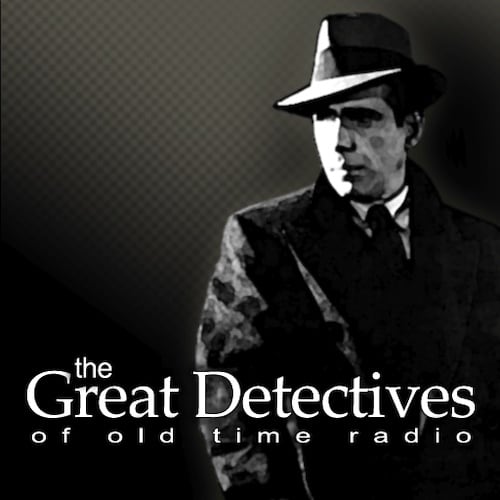After its first collection of Poirot Audio Dramas, Poirot’s Finest Cases, the BBC has served up another collection called, More of Poirot’s Finest Cases.
The first collection contained Eight mysteries starring John Moffat as the famous Belgian Detective. That collection did contain most of the best Poirot cases. This collection is a reminder that Christie wrote a lot of great Poirot novels.
Overall, these stories are a notch below the first collection, the production values are up a bit. While most of the stories in the first set all seemed to have the same sort of generic 1920s opening theme, these do have more individualized musical scores and themes, “Sad Cyrpess” has a haunting opening. Audible’s division of these stories into chapters is a little less satisfactory as it takes each story and cuts it in half, even though some were serialized and some were broadcast as feature-length productions.
The stories on the collection are “Evil Under the Sun,” “Sad Cypress,” “Murder in Mesopotamia,” “Lord Edgeware Dies,” “Hallowe’en Party,” “Murder on the Links,” and “Five Little Pigs.”
Most of these are good Poirot tales. My favorite would be, “Five Little Pigs.” This particular production was my first exposure to Poirot, so I have a soft spot for it. It’s the story of Poirot helping a young woman considering marriage asking Poirot to investigate whether her mother murdered her father sixteen years previously. Poirot takes on this cold case and meets all the principles who are still alive. I like how the production brings each character to life and the solution is clever with a well-done denouement.
The weakest release in the set is, “Hallowe’en Party” where a young teenager known for telling wild tales mentions to mystery novelist Ariadne Oliver at a Hallowe’en Party that she once observed a murder but didn’t know it was a murder. She’s subsequently found murdered by being drowned in an apple bobbing tank. This story is well-performed and well-adapted, but this is generally not viewed as one of Christie’s better works. The story is darker than most other Christie’s stories as we have the murder of not one but two children. Yet, I don’t think those murderers were given the appropriate emotional weight. Add in a convoluted solution and this one one is the weakest story in the set.
“Murder on the Links” is a good story, but it’s different from most Poirot stories. This was only Christie’s second Poirot novel and he’s a lot more concerned with physical evidence, as opposed to the psychological evidence Poirot is known for. Also, this story features Jeremy Clyde as Captain Hastings, who in the other radio adaptations was played by Simon Williams. This leads to a younger Captain Hastings which is a bit odd, though the performance is fine.
Overall, this set is a bargain for Poirot fans. For a single audible Credit, or a low purchase price, you get seven Poirot audio dramas featuring John Moffat. The stories are not Poirot’s greatest, but most have a high quality. When coupled with better production values, this makes this set a worthwhile purchase.
Rating:4.25 out of 5
